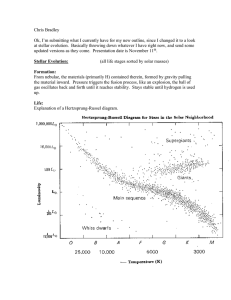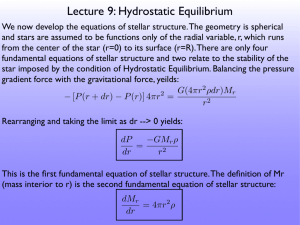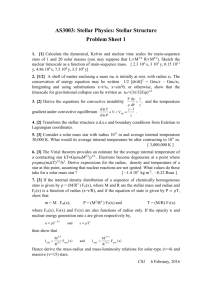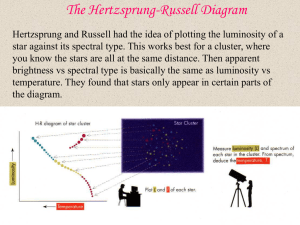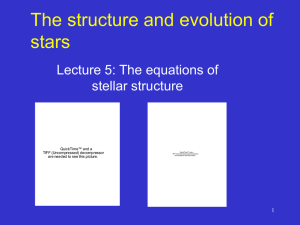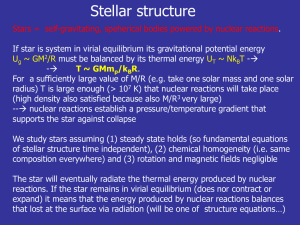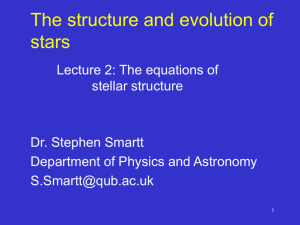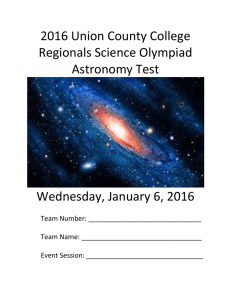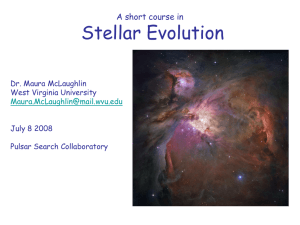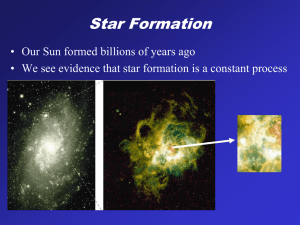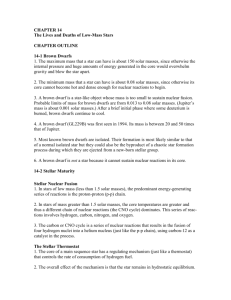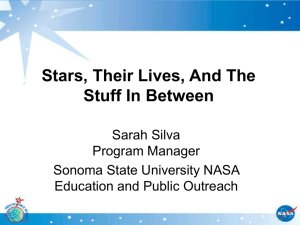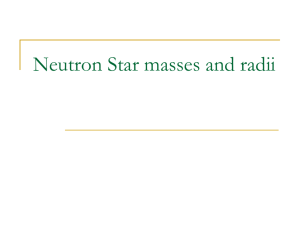Notes for 7 October
advertisement
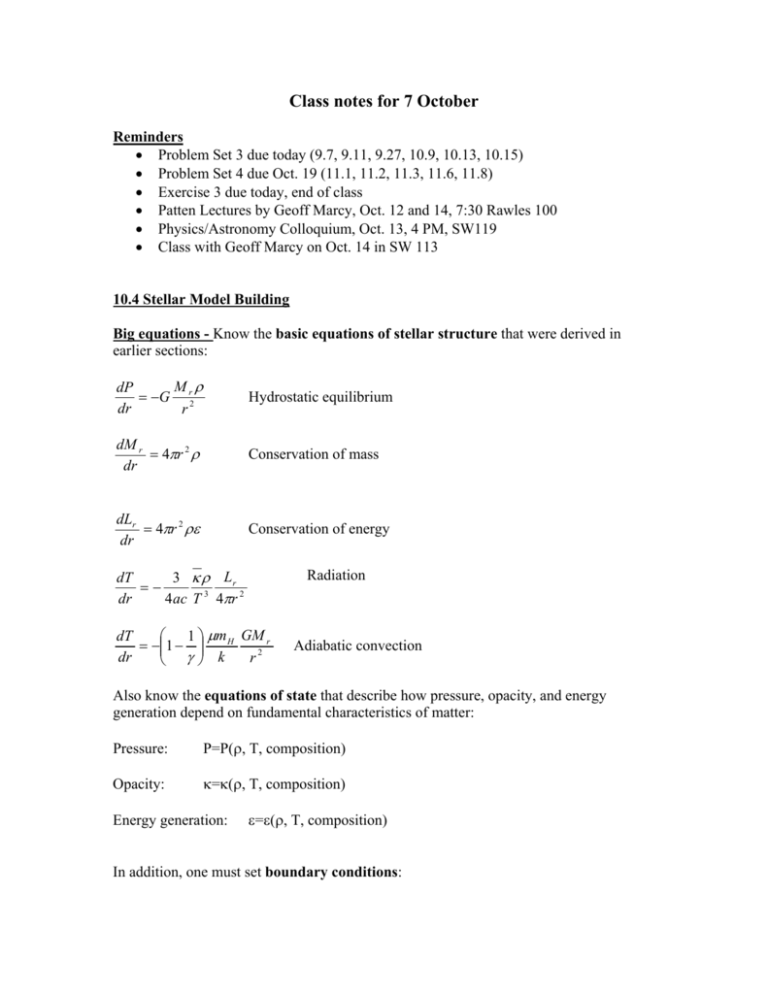
Class notes for 7 October Reminders • Problem Set 3 due today (9.7, 9.11, 9.27, 10.9, 10.13, 10.15) • Problem Set 4 due Oct. 19 (11.1, 11.2, 11.3, 11.6, 11.8) • Exercise 3 due today, end of class • Patten Lectures by Geoff Marcy, Oct. 12 and 14, 7:30 Rawles 100 • Physics/Astronomy Colloquium, Oct. 13, 4 PM, SW119 • Class with Geoff Marcy on Oct. 14 in SW 113 10.4 Stellar Model Building Big equations - Know the basic equations of stellar structure that were derived in earlier sections: M ρ dP = −G r2 dr r Hydrostatic equilibrium dM r = 4πr 2 ρ dr Conservation of mass dLr = 4πr 2 ρε dr Conservation of energy dT 3 κ ρ Lr =− dr 4 ac T 3 4πr 2 Radiation ⎛ 1 ⎞ µm H GM r dT = −⎜⎜1 − ⎟⎟ dr r2 ⎝ γ⎠ k Adiabatic convection Also know the equations of state that describe how pressure, opacity, and energy generation depend on fundamental characteristics of matter: Pressure: P=P(ρ, T, composition) Opacity: κ=κ(ρ, T, composition) Energy generation: ε=ε(ρ, T, composition) In addition, one must set boundary conditions: Mass and luminosity approach zero as radius approaches zero. Temperature, pressure, and density approach zero as radius approaches the radius of the star. Vogt-Russell theorem: The mass and composition of a star uniquely determine its radius, luminosity, and internal structure, as well as its subsequent evolution. To solve the equations of stellar structure requires the numerical integration of the equations of stellar structure. As for an atmosphere, the star is described as a series of shells, each with a defining temperature, pressure, etc. One must iterate to match simultaneously the boundary conditions at the center and at the surface of the star. 10.6 The Main Sequence Stars are made mostly of hydrogen (90% of atoms, about 75% of mass). As nuclear burning proceeds, the composition and mean molecular weight of the star will change slowly. These changes require an adjustment of the temperature and luminosity. The upper end of the main sequence is basically limited at about 90 solar masses by radiation pressure in these extremely luminous stars. Radiation pressure counteracts gravity, and blows off the outer layers. The lower end of the main sequence is defined where the star has too little mass to reach a central temperature to sustain hydrogen burning (about 0.08 solar masses). Main sequence luminosities range from 5 x 10-4 to 106 solar luminosities. Masses change by only a factor of 103. Because of the high central temperatures, hydrogen burning proceeds very quickly in massive stars, and main sequence lifetimes decrease as stellar mass increases. Temperatures range from 2700 K for 0.08 solar masses to 53,000 K for 90 solar masses. Interior structure also varies with mass. Massive stars have convective cores (why?). Low mass stars have radiative cores. Low mass stars have outer convective zones (why?). Stars with masses below 0.3 solar masses are completely convective.
